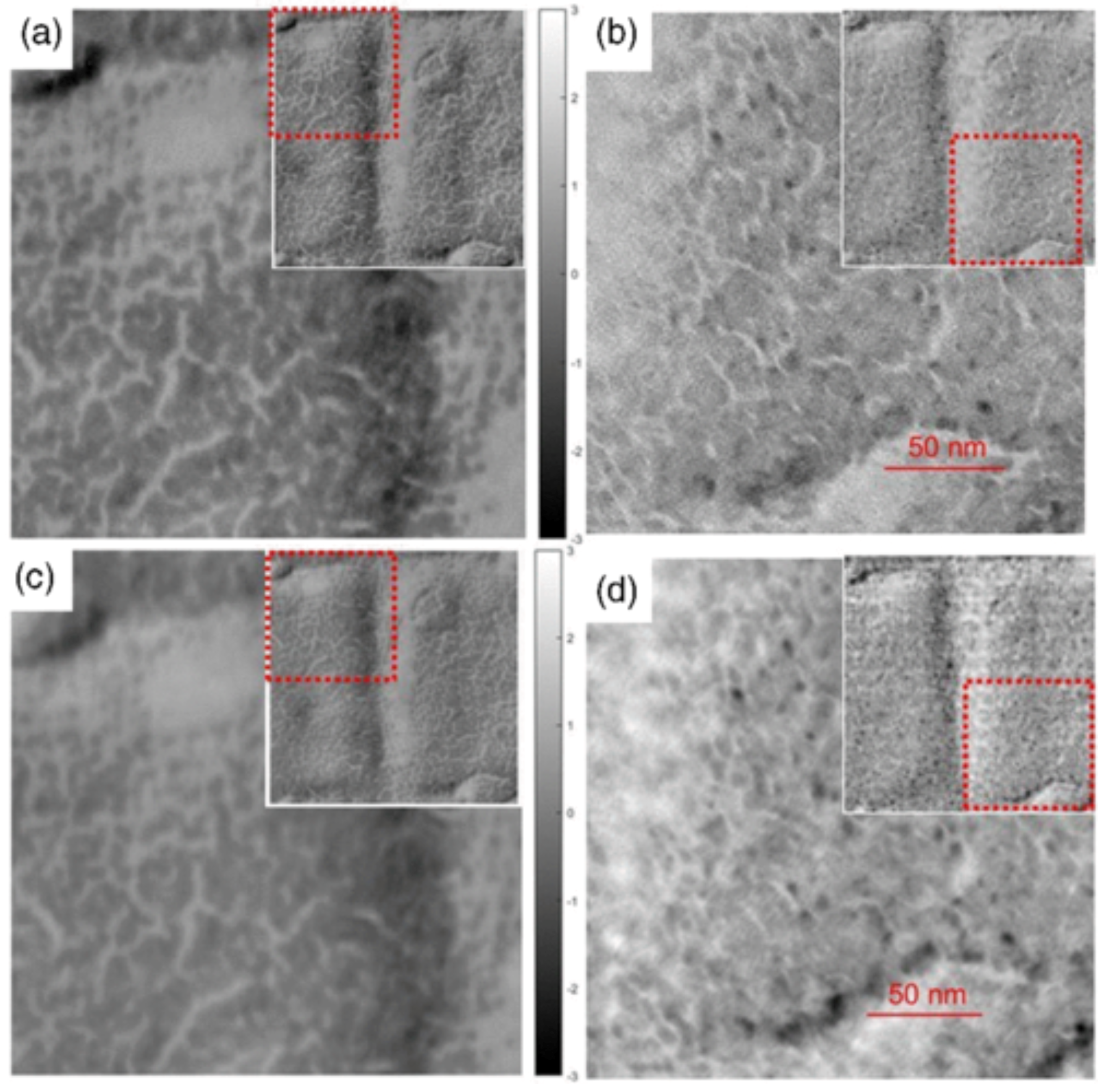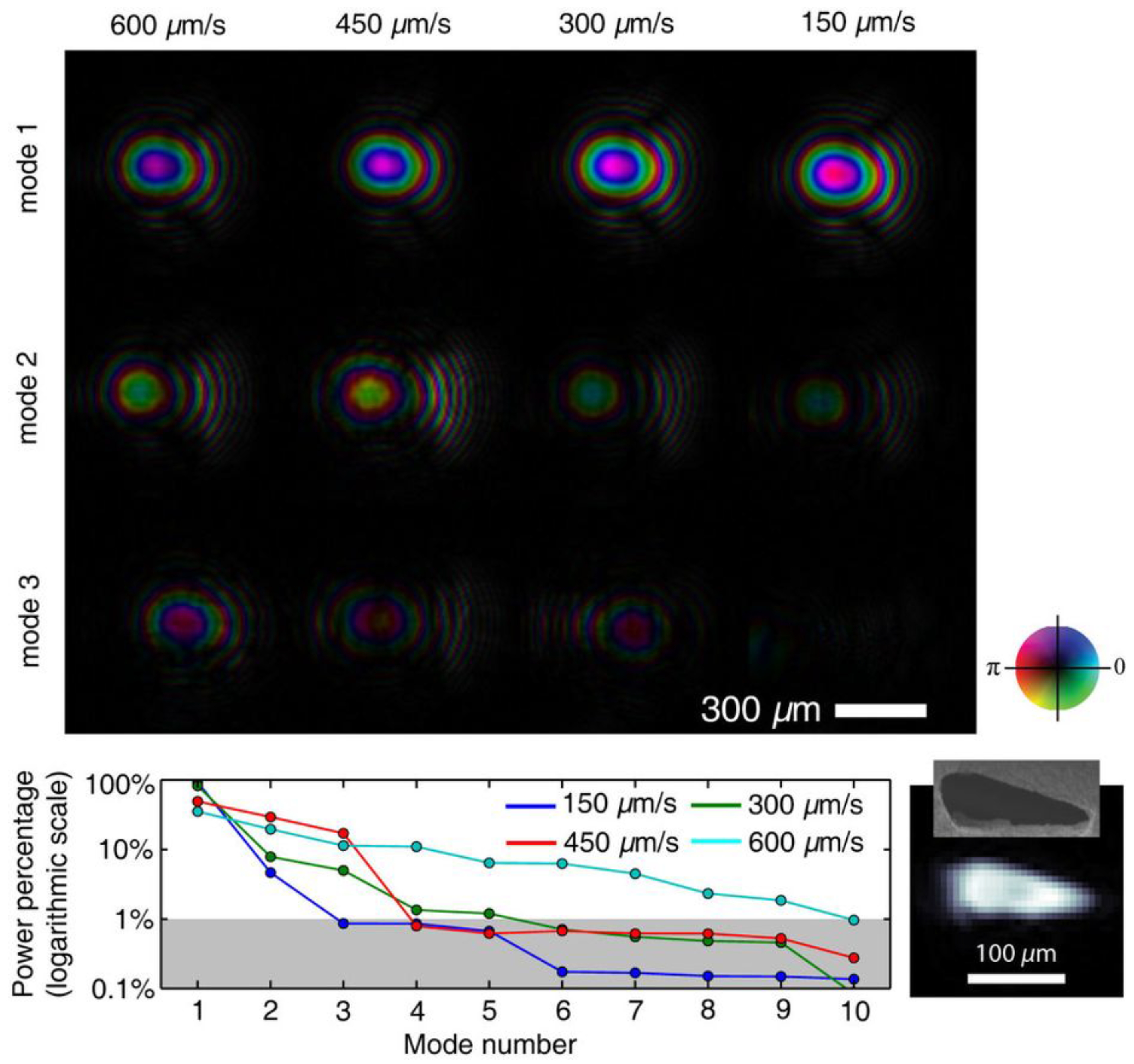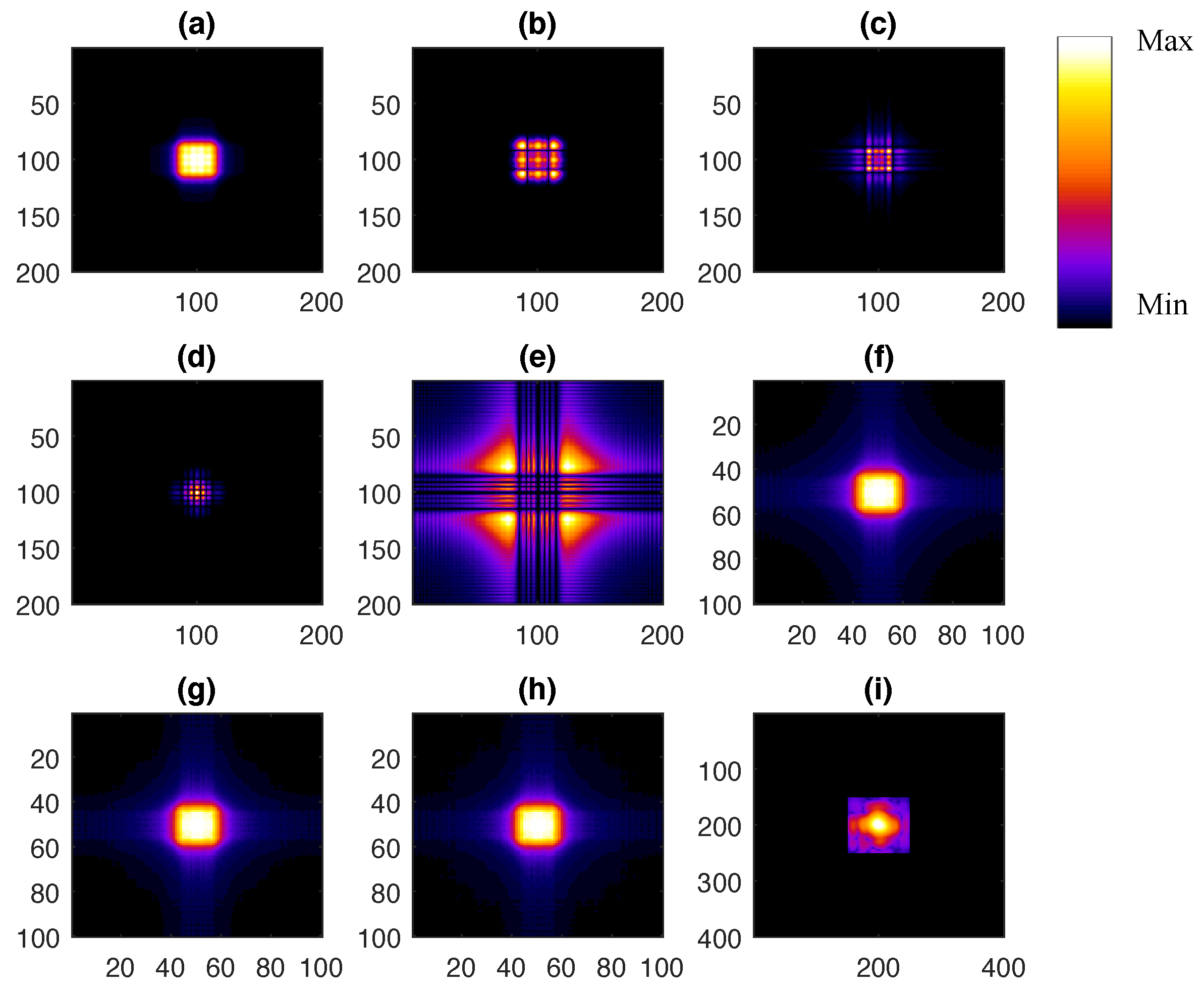Multi-Modal Ptychography: Recent Developments and Applications
Abstract
1. Introduction
2. Theory
3. Simulation Results
4. Discussion
5. Conclusions
Author Contributions
Funding
Acknowledgments
Conflicts of Interest
References
- Rodenburg, J.M.; Faulkner, H.M.L. A phase retrieval algorithm for shifting illumination. Appl. Phys. Lett. 2004, 85, 4795–4797. [Google Scholar] [CrossRef]
- Rodenburg, J.M.; Hurst, A.C.; Cullis, A.G.; Dobson, B.R.; Pfeiffer, F.; Bunk, O.; David, C.; Jefimovs, K.; Johnson, I. Hard-X-Ray Lensless Imaging of Extended Objects. Phys. Rev. Lett. 2007, 98, 034801. [Google Scholar] [CrossRef] [PubMed]
- Thibault, P.; Dierolf, M.; Bunk, O.; Menzel, A.; Pfeiffer, F. Probe retrieval in ptychographic coherent diffractive imaging. Ultramicroscopy 2009, 109, 338–343. [Google Scholar] [CrossRef] [PubMed]
- Pierre, T.; Martin, D.; Andreas, M.; Oliver, B.; Christian, D.; Franz, P. High-Resolution Scanning X-ray Diffraction Microscopy. Science 2008, 321, 379–382. [Google Scholar]
- Clark, J.N.; Huang, X.; Harder, R.; Robinson, I.K. High-resolution three-dimensional partially coherent diffraction imaging. Nat. Commun. 2012, 3, 993. [Google Scholar] [CrossRef] [PubMed]
- Parks, D.H.; Shi, X.; Kevan, S.D. Partially coherent X-ray diffractive imaging of complex objects. Phys. Rev. A 2014, 89, 063824. [Google Scholar] [CrossRef]
- Thibault, P.; Menzel, A. Reconstructing state mixtures from diffraction measurements. Nature 2013, 494, 68–71. [Google Scholar] [CrossRef] [PubMed]
- Batey, D.J.; Claus, D.; Rodenburg, J.M. Information multiplexing in ptychography. Ultramicroscopy 2014, 138, 13–21. [Google Scholar] [CrossRef] [PubMed]
- Clark, J.N.; Huang, X.; Harder, R.J.; Robinson, I.K. Dynamic imaging using ptychography. Phys. Rev. Lett. 2014, 112, 113901. [Google Scholar] [CrossRef] [PubMed]
- Li, P.; Edo, T.; Batey, D.; Rodenburg, J.; Maiden, A. Breaking ambiguities in mixed state ptychography. Opt. Express 2016, 24, 9038–9052. [Google Scholar] [CrossRef] [PubMed]
- Burdet, N.; Shi, X.; Parks, D.; Clark, J.N.; Huang, X.; Kevan, S.D.; Robinson, I.K. Evaluation of partial coherence correction in X-ray ptychography. Opt. Express 2015, 23, 5452–5467. [Google Scholar] [CrossRef] [PubMed]
- Abbey, B.; Whitehead, L.W.; Quiney, H.M.; Vine, D.J.; Cadenazzi, G.A.; Henderson, C.A.; Nugent, K.A.; Balaur, E.; Putkunz, C.T.; Peele, A.G.; et al. Lensless imaging using broadband X-ray sources. Nat. Photonics 2011, 5, 420–424. [Google Scholar] [CrossRef]
- Enders, B.; Dierolf, M.; Cloetens, P.; Stockmar, M.; Pfeiffer, F.; Thibault, P. Ptychography with broad-bandwidth radiation. Appl. Phys. Lett. 2014, 104, 171104. [Google Scholar] [CrossRef]
- Cao, S.; Kok, P.; Li, P.; Maiden, A.M.; Rodenburg, J.M. Modal decomposition of a propagating matter wave via electron ptychography. Phys. Rev. A 2016, 94, 063621. [Google Scholar] [CrossRef]
- Huang, X.; Lauer, K.; Clark, J.N.; Xu, W.; Nazaretski, E.; Harder, R.; Robinson, I.K.; Chu, Y.S. Fly-scan ptychography. Sci. Rep. 2015, 5, 9074. [Google Scholar] [CrossRef] [PubMed]
- Deng, J.; Nashed, Y.S.G.; Chen, S.; Phillips, N.W.; Peterka, T.; Ross, R.; Vogt, S.; Jacobsen, C.; Vine, D.J. Continuous motion scan ptychography: Characterization for increased speed in coherent X-ray imaging. Opt. Express 2015, 23, 5438–5451. [Google Scholar] [CrossRef] [PubMed]
- Lerotic, M.; Jacobsen, C.; Gillow, J.B.; Francis, A.J.; Wirick, S.; Vogt, S.; Maser, J. Cluster analysis in soft X-ray spectromicroscopy: Finding the patterns in complex specimens. J. Electron Spectrosc. Relat. Phenom. 2005, 144–147, 1137–1143. [Google Scholar] [CrossRef]
- Lerotic, M.; Jacobsen, C.; Schäfer, T.; Vogt, S. Cluster analysis of soft X-ray spectromicroscopy data. Ultramicroscopy 2004, 100, 35–57. [Google Scholar] [CrossRef] [PubMed]
- Thibault, P.; Guizar-Sicairos, M. Maximum-likelihood refinement for coherent diffractive imaging. New J. Phys. 2012, 14, 063004. [Google Scholar] [CrossRef]







© 2018 by the authors. Licensee MDPI, Basel, Switzerland. This article is an open access article distributed under the terms and conditions of the Creative Commons Attribution (CC BY) license (http://creativecommons.org/licenses/by/4.0/).
Share and Cite
Shi, X.; Burdet, N.; Batey, D.; Robinson, I. Multi-Modal Ptychography: Recent Developments and Applications. Appl. Sci. 2018, 8, 1054. https://doi.org/10.3390/app8071054
Shi X, Burdet N, Batey D, Robinson I. Multi-Modal Ptychography: Recent Developments and Applications. Applied Sciences. 2018; 8(7):1054. https://doi.org/10.3390/app8071054
Chicago/Turabian StyleShi, Xiaowen, Nicolas Burdet, Darren Batey, and Ian Robinson. 2018. "Multi-Modal Ptychography: Recent Developments and Applications" Applied Sciences 8, no. 7: 1054. https://doi.org/10.3390/app8071054
APA StyleShi, X., Burdet, N., Batey, D., & Robinson, I. (2018). Multi-Modal Ptychography: Recent Developments and Applications. Applied Sciences, 8(7), 1054. https://doi.org/10.3390/app8071054



